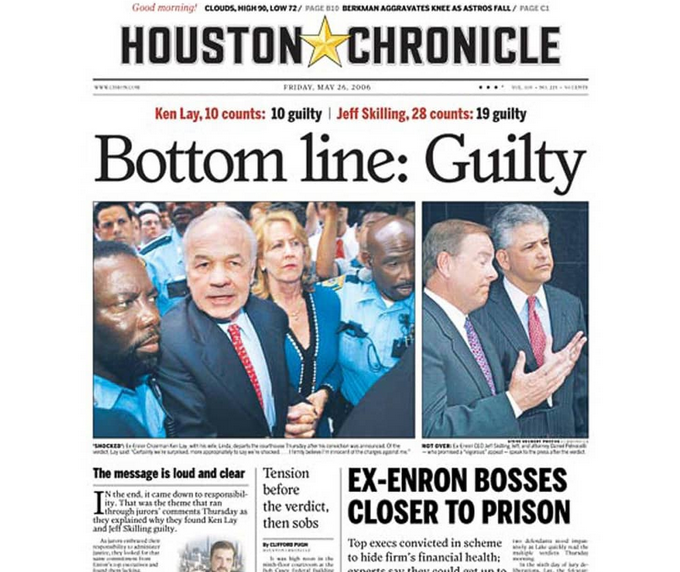Creators & Entrepreneurs
How to Write a Mission Statement (+ Examples)
If you want a solid foundation for your business, writing an impactful mission statement is probably on your list...
Author
Mighty Team
Last Updated
February 6, 2025

In any business, having a mission functions as a centering “why” and helps leaders, employees, and customers remember the reason it started in the first place. That’s where a mission statement comes in — it explains your business’s existence in a short summary and can reignite the passion you have for your business.
Whether your business has one or one hundred employees, you need a mission statement. Here’s what we’ll cover in this article:
What a mission statement is.
Why a mission statement matters.
Tips for writing a mission statement.
How to craft the perfect mission statement.
What is a mission statement?
Mission statement definition
A mission statement is a one- or two-sentence summary of what your company does, for whom, and the impact your company has. This big purpose is the driving force behind the work and brand and is a commitment to stakeholders, employees, and customers about where the focus lies and what kind of business it will be. Every entrepreneur and organization needs a mission statement because it reiterates its purpose.
There are different approaches to writing a mission statement, but most mission statements will include some combination of the company’s goals, values, and purpose.
Here are some of the mission statements behind the world’s top brands.
Examples of famous mission statements:
“Google’s mission is to organize the world’s information and make it universally accessible and useful.” – Google
“To be Earth’s most customer-centric company” – Amazon
“To save people money so they can live better” – Walmart
“We help people achieve independence by making it easier to start, run, and grow a business. We believe the future of commerce has more voices, not fewer, so we’re reducing the barriers to business ownership to make commerce better for everyone.” – Shopify*

Why is a mission statement important?
Here are some of the reasons why a mission statement matters:
A mission statement can help you clarify your business’s goals.
It helps employees or contractors understand how their work contributes to the business’s success.
A mission statement acts as a guide for the company culture since it ties in the values, norms, and beliefs of a company to guide the workplace environment and employee actions.
It can help attract top talent by communicating, in a single sentence, why your business exists.
Lastly, a mission statement distinguishes the business from competitors.
But isn’t it just corporate jargon?
“We treat others as we would like to be treated ourselves. We do not tolerate abusive or disrespectful treatment. Ruthlessness, callousness, and arrogance don’t belong here.”
How about this mission statement? We might imagine a company with this mission statement would be a wonderful place to work, right?

Actually, that’s the mission statement for a little company called Enron. It applied for bankruptcy in 2001 after a series of scandals that cost shareholders $11 billion.
So a skeptical person might ask why mission statements even matter. Aren’t they just a product of high-priced consultants and CEO weekend retreats?
If they aren’t acted on, then absolutely yes.
But look at the mission statements of some of the most successful companies and you’ll see missions that–for the most part–are being acted out.
For example:
Amazon’s mission statement of being “earth’s most customer-centric company” isn’t an empty flex. Research shows that customers pick them because of easy use, tons of choices, and lightning-fast shipping. That’s why they’re growing–because they give customers what they want.
Walmart’s mission statement– “to save people money so they can live better”--reflects what customers believe about the brand. 41% of customers choose Walmart for its lower prices. And don’t forget Walmart’s easy return policy–for budget-conscious shoppers, knowing you can bring something back helps you know you won’t waste money.
Vision vs. mission statement
What’s the difference between vision and mission?
Often, mission and vision are used interchangeably or seen as the same when the two are actually distinct. While both act as a guide for a business, here’s the difference:
A vision is future-focused A vision is what a business aspires to. It’s a business’s North Star. It’s what leadership wants to achieve in the next couple of years (e.g. what are the hopes and dreams for the company?).
A mission statement is here and now Whereas the mission is why a business exists today. Instead of being future-focused, the mission statement covers the present — what a business is currently doing and essentially how it plans to achieve its vision.
Examples of vision vs mission statements
TED

For example, the brand TED (Technology, Education, and Design)’s mission statement is “Spread ideas,” and their vision statement is “We believe passionately in the power of ideas to change attitudes, lives, and ultimately, the world.”

Another example is LinkedIn. Their mission statement is “To connect the world’s professionals to make them more productive and successful.” Their vision statement is “To create economic opportunity for every member of the global workforce.” Their mission clearly states what they do and for whom, with an ambitious vision to help every working person around the world.
How to craft a mission statement
If you’re ready to craft a great mission statement, here are some steps to do it. If you’re just starting out, you might be on your own. If you have an existing business, get your employees together and brainstorm through these steps. You might even survey your customers to find out what’s important to them.
1. Describe the business’s purpose
Let’s first start with your “why.” Write about the purpose of the company’s existence, or why you started this company in the first place. What’s the problem you solve?
For example, a stationery company might say that they started their business because they wanted to produce high-quality products to help their customers stay organized and spark creativity. Every time they wanted to buy a planner for themselves, they never found one that spoke to them — every planner they saw was boring and unimaginative, which is why they decided to start their own company — to solve a need in the market.
Create a word cloud or brainstorm some words and phrases around your purpose. Since this is a fuzzy concept, here are some questions to get you started:
Why would our customers say we exist?
What would our customers/potential customers say they like the most about us?
What problems do we help our customers solve?
What needs do we meet for our customers? (e.g. the stationary company above isn’t just delivering planners. It’s creating an inspirational organization.)
2. Outline what the business does
Part of your mission statement is about what the business does. Here are some questions to help you turn this into a mission statement:
What products or services do you provide?
Next, outline what the business provides, whether it’s product or service-based. For example, the stationery company might say that they create one-of-a-kind notebooks, journals, planners, and calendars.
What niche do you serve?
Once you have the basics down, be more specific so you can differentiate your company from your competitors. Perhaps you serve a certain niche (e.g. stay-at-home parents, freelancers, or graphic designers), or maybe it’s the material you use that’s unique, or even the service you provide is different from your competitors’.
What values help you deliver these?
That same stationery company, for example, might say that they use recycled paper to create one-of-kind notebooks, journals, planners, and calendars to help business owners stay organized. By stating these details, the company is highlighting what makes them unique, along with who they serve, helping them stand out from the sea of competition.
3. Consider what you value most
After writing about the purpose of the company’s existence and what they provide, you’ll want to outline the process (how they do what they do). This will involve listing the company’s core values. Some examples of core values include:
Respect and authenticity
Collaboration
Purpose and impact
Forward-thinking
Curiosity
Innovation
Providing equal opportunity
Delivering excellent customer service
Protecting the environment
Sustainability
Creating high-quality products and services
Going back to our stationery company, they might say that they value creativity and highlight local talent by commissioning artists every month to design one-of-a-kind prints used on their products. They also value sustainability and protecting the environment since they use recycled material.
4. Refine and revise the mission statement
After writing out a few iterations of the mission statement, pick the one you like the best. A mission statement is crucial for the foundation of your business, so take your time. You can even come back to it after a few hours or even a few days with a set of fresh eyes. See if the wording makes sense and that your audience can easily understand it.
It’s also normal for companies to pivot over time so it’s important to revisit your mission statement to ensure it still rings true. But try to choose something that can serve as your north star for a while.
Tips to keep in mind when writing your mission statement
Be clear and concise
The examples of mission statements above show that a great mission statement can be short. Be clear and direct about the impact your company wants to make in just one or two sentences. Remove anything that feels out of place or doesn’t add value.
Avoid using jargon
Don’t use overly technical language or jargon in your mission statement. You want it to be comprehensible, not confusing.
Find balance
Try and strike a balance between realism and optimism. Be realistic about what your company does, but be optimistic about the impact you want to make.
Get feedback
Make sure to ask other stakeholders and employees about the mission statement. See if they resonate with it and what they’d change.
Mission statement examples
Here are some examples of generic mission statements that you can use for inspiration:
Example 1 Providing women with ethically sourced clothing made by American designers so they look stylish while feeling comfortable.
Example 2 Providing freelancers with a brand strategy so they’re positioned as experts who attract the right clients.
Example 3 Helping small business owners become more visible and seen as an authority in their field by creating captivating videos.
Example 4 Creating gourmet chocolate for the food connoisseur, using sustainable ingredients.
Example 5 Developing actionable financial solutions for parents, allowing them to achieve their investment goals and retire earlier in life.
Example 6 Helping CEOs create workplaces where conflicts dissipate into opportunities for growth.
Example 7 Spreading the power of optimism to widowers through creative programs.
Example 8 Helping businesses reinvent themselves by seizing opportunities and embracing change.
Example 9 Transforming women’s bodies and lives through holistic nutrition so they can live their lives to the fullest.
Example 10 Creating stunning, one-of-a-kind jewelry that’s as unique as our customers.
Conclusion
Now that you have a powerful mission statement, don’t forget to use it! You can use it in your marketing, like in your company’s social media bio and on your website. You can even print it out and hang it in front of your desk so you remember why you started your business in the first place.
Here at Mighty, we encourage creators to develop their Big Purpose (our equivalent of a mission statement). A Big Purpose is the motivation for creating a community. It’s something that can only be accomplished by the members coming together to answer the call. It’s why a community exists in the first place.
If you want to scale your business to totally new heights by creating a community and having a space for courses, content, and events, Mighty is your go-to platform.
Don’t take our word for it, you can try it totally free for 14 days. No credit card required!
Ready to start building your community?
Start a free 14-day trial to explore Mighty—no credit card required.
More like this
Join Mighty Community
Learn the principles of Community Design™ (and see them in action) alongside thousands of creators and entrepreneurs. It's free to join!

Online Courses
Creating a Course
Teaching a Course
Course Platforms
Selling a Course
Communities & Memberships
Community Platforms
Managing a Community
Building a Community
Growing a Community
Monetizing a Community
Content Creation
Creators & Entrepreneurs
Monetization
Content Creation
Starting a Business
Website Builders
Creating & Managing a Website
Events
Event Platforms
Hosting & Marketing Events
Branded Apps
Creating a Mobile App
Coaching Apps
Community Apps
Coaching
Mastermind Groups
Starting a Coaching Business
Coaching Platforms
Filter by Category
Online Courses
Communities & Memberships
Creators & Entrepreneurs
Events
Branded Apps
Coaching
Build a $1 Million Community
This free masterclass went viral—sign up to learn why.

























